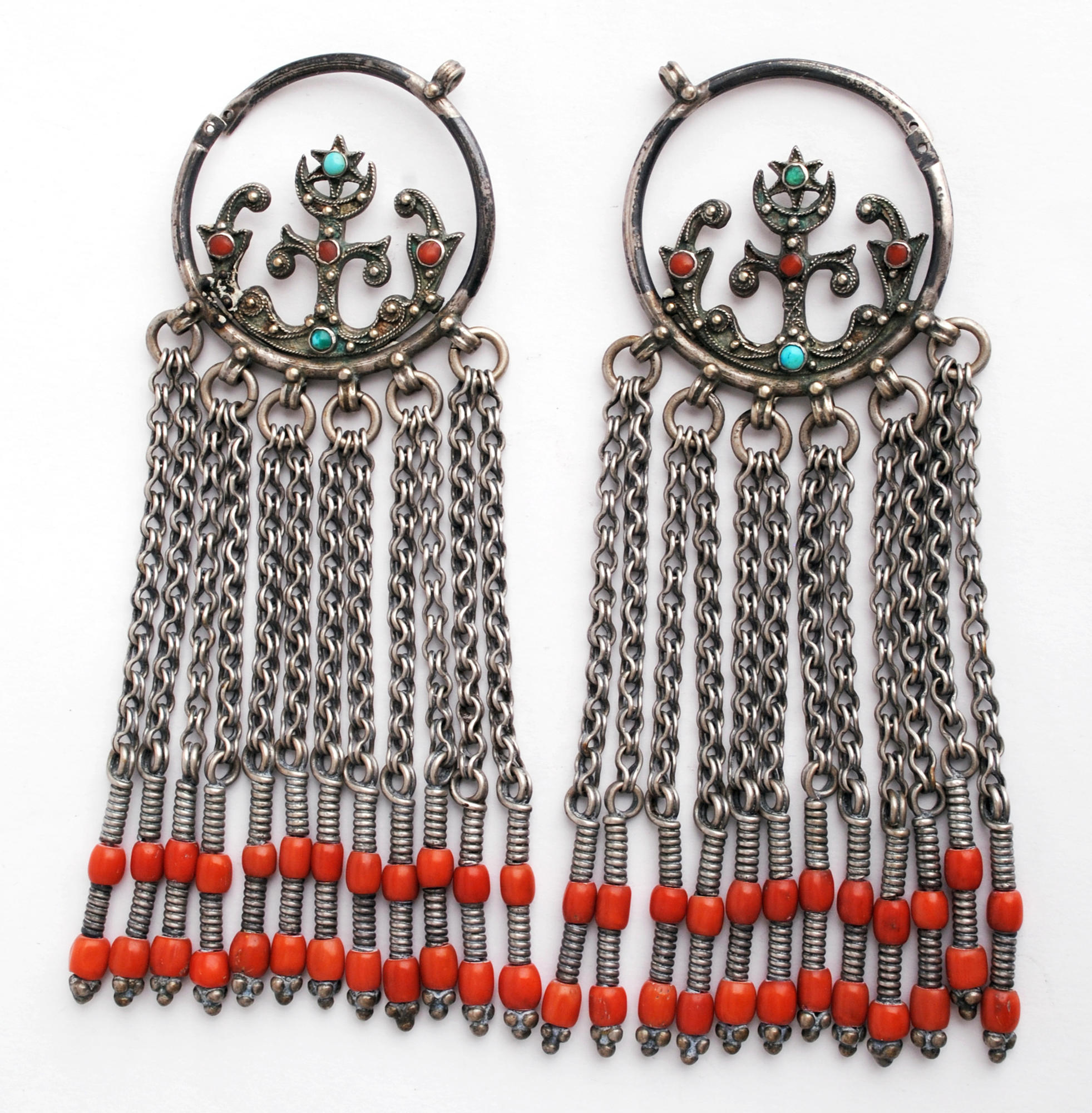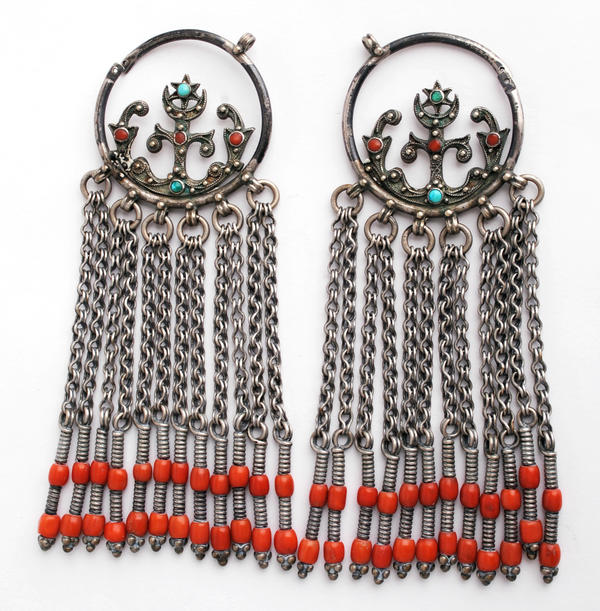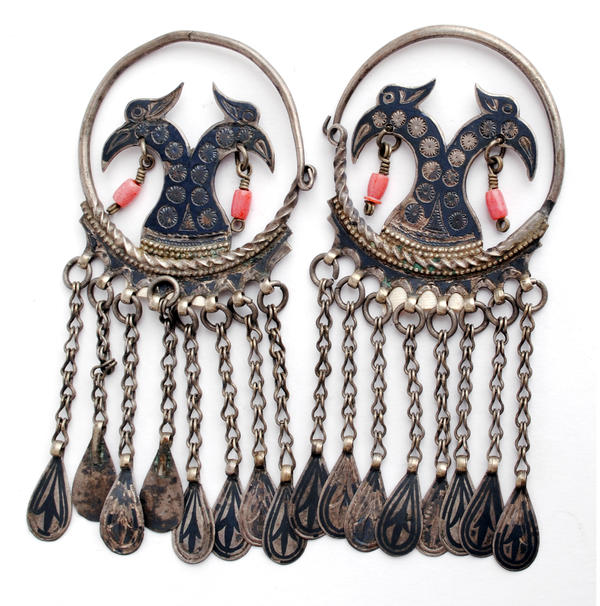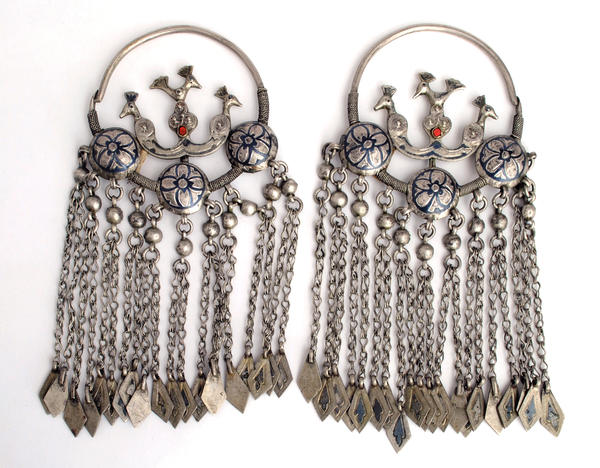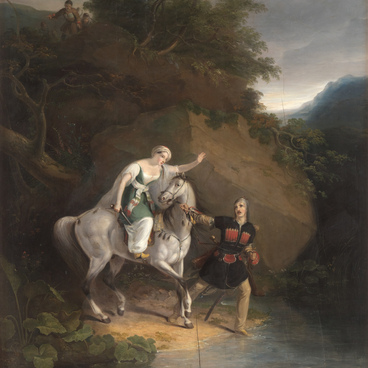Temple pendants are considered one of the oldest forms of ornament used primarily by two peoples of Dagestan, the Avars and Dargins.
The pendants came in the shape of a ring or rosette and were fixed onto the so called chokhto, a very popular among Dagestan women headdress resembling a cape. In everyday life women wore it to protect their hair from dust and mud; on holidays they covered it with their best scarves and decorated with silver ornaments. Occasionally, one pendant was connected to the other by a silver chain fixed at the back of the woman’s head.
The pendants came in the shape of a ring or rosette and were fixed onto the so called chokhto, a very popular among Dagestan women headdress resembling a cape. In everyday life women wore it to protect their hair from dust and mud; on holidays they covered it with their best scarves and decorated with silver ornaments. Occasionally, one pendant was connected to the other by a silver chain fixed at the back of the woman’s head.
